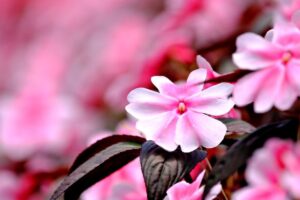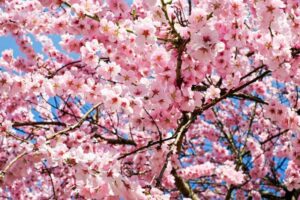In this guide, we’ll explore an array of captivating perennials suitable for Zone 5 gardens, each deserving of a space in your sunny outdoor retreat.
Tulips
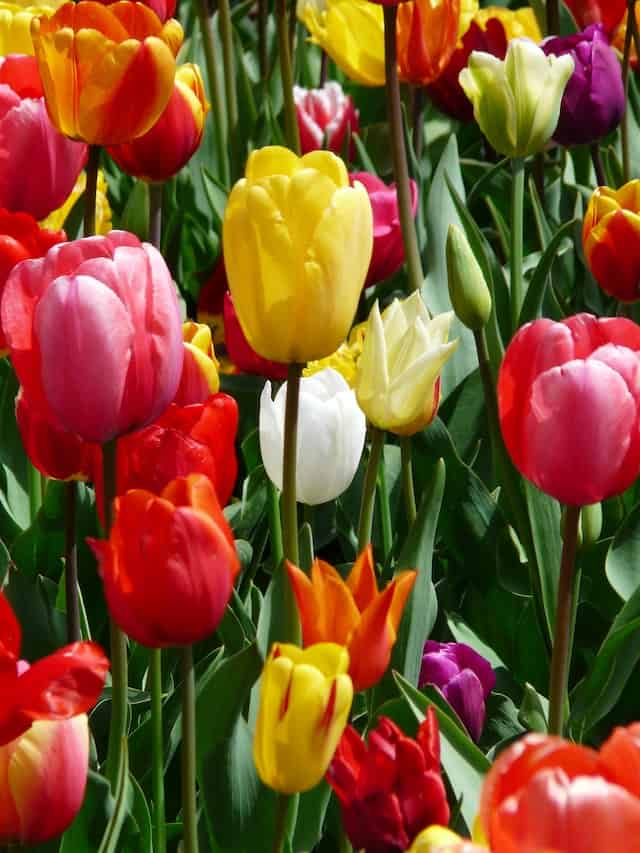
Tulips are perhaps one of the most iconic spring perennials. These cheerful blooms burst forth from dormancy as the days grow longer and warmer, making them a bright sign of the season’s arrival. Available in a stunning spectrum of colors, tulips come in various heights and shapes, enabling creative arrangements in your garden. They flourish in full sun, preferring well-drained soil to prevent bulb rot.
To maximize their blooming potential, plant tulips in groups of at least five to create a dramatic display. They can also be interplanted with other spring-blooming perennials, such as daffodils, which helps extend the seasonal bloom period. After tulip flowers fade, allow the foliage to remain until it turns yellow. This will nourish the bulb for next year’s display. With their classic elegance and ease of care, tulips are a great choice for any Zone 5 garden.
Delphinium
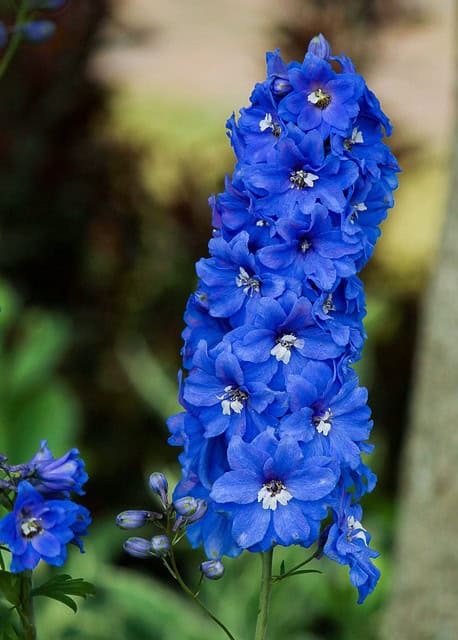
Delphiniums are another striking addition to any full-sun garden. Known for their towering spikes of blue, purple, and white flowers, delphiniums can reach heights of up to six feet, making them an impressive focal point. These stunning perennials thrive in well-drained soil and prefer full sun, but they balk at extreme heat. Therefore, in the height of summer, providing them with a little shade during the hottest part of the day will keep them blooming beautifully.
Delphiniums are also favored by butterflies and bees, making them not only a visual delight but also a contributor to your garden’s ecosystem. To ensure their robustness, stake taller varieties to prevent flopping. Regular deadheading encourages more blooms, while cutting them back in early spring helps rejuvenate the plants. These majestic flowers can establish a regal tone in mixed borders or cottage gardens.
Purple Coneflowers
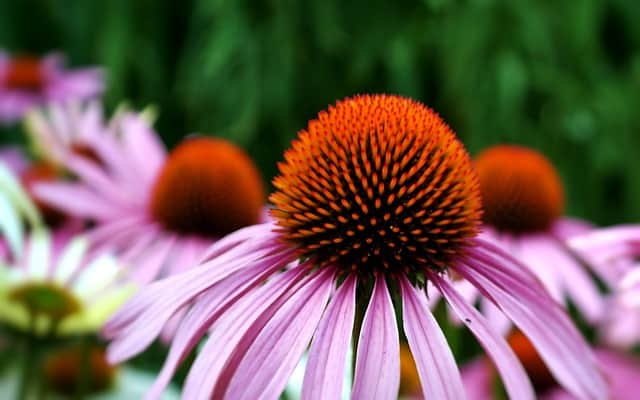
Purple coneflowers (Echinacea purpurea) are hardy, drought-resistant perennials that flourish in full sun, making them ideal for Zone 5. Their distinctive, daisy-like blooms with spiky, orange centers attract pollinators, particularly bees and butterflies, which play a crucial role in maintaining the garden’s health. Coneflowers are highly adaptable and can thrive in various soil types, although they prefer well-drained conditions.
One of the unique features of coneflowers is their ability to bloom from mid-summer to fall, offering a long season of color. Not only do they make an excellent cut flower, but their seed heads also provide winter forage for birds. To enhance your garden’s aesthetic appeal, plant coneflowers in drifts among grasses, or pair them with other perennials such as daylilies or black-eyed Susans for a stunning visual impact.
Bee Balm
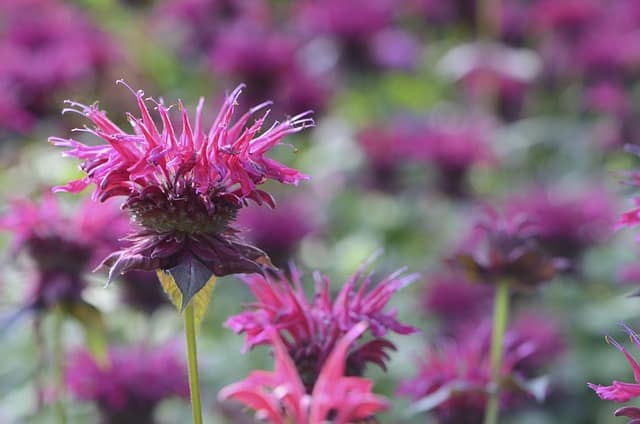
Bee balm (Monarda didyma) is a must-have perennial for those interested in both beauty and wildlife support. With its vibrant red, pink, or purple blooms, bee balm is a magnet for pollinators. It thrives in full sun but also tolerates partial shade, making it versatile in the garden design. Recognized for its unique, minty fragrance, bee balm’s leaves can be snipped for a delightful herbal tea.
This perennial prefers moist, well-drained soil, so incorporating a mulch layer can help retain moisture during dry spells. To encourage a bushy growth habit, pinch back its stems in spring. Bee balm’s vibrant flowers paired with their utility in promoting pollinator health make them a cherished addition to any sunny perennial garden.
Peony
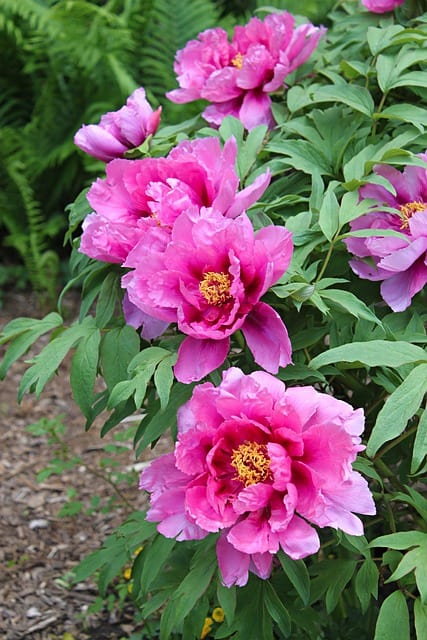
When it comes to timeless beauty, few perennials rival the peony. These show-stoppers put on a breathtaking display of blooms in late spring and early summer, flaunting their large, fragrant flowers in shades of pink, red, white, or coral. Peonies thrive in full sun and prefer rich, well-drained soil that has been amended with organic matter.
Resilient and long-lived, peonies can thrive for decades, often becoming treasured family heirlooms. One essential tip for growing peonies is to plant them at the correct depth; their eyes should be just below the soil surface to ensure healthy growth. Protecting them from strong winds with suitable companions can prevent flower droop and support their growth. Harvest some for stunning bouquets, and enjoy their beauty for years to come.
Lilies
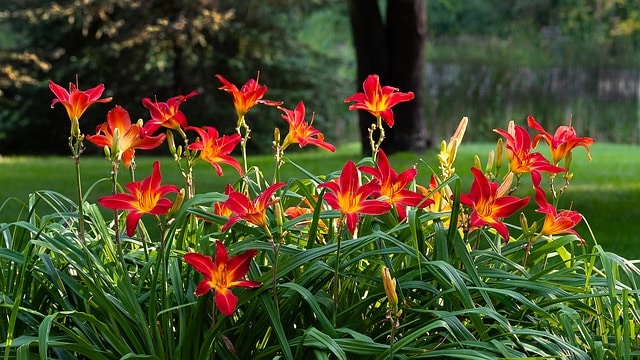
Lilies are another sun-lover that adds elegance and fragrance to the Zone 5 landscape. Coming in numerous varieties, including Asiatic, Oriental, and Trumpet lilies, they bring an explosion of color and a delightful scent to gardens. Lilies prefer full sun to partial shade and thrive in well-drained, fertile soil, making them relatively easy to maintain.
Though individual blooms last only a few days, their sequential flowering elongates the breathtaking displays throughout summer. Regular deadheading and providing adequate water during dry spells will enhance their blooming period. Notably, lilies can also be grown in containers, allowing you to reposition them as needed and experiment with color combinations in your garden.
Lavender
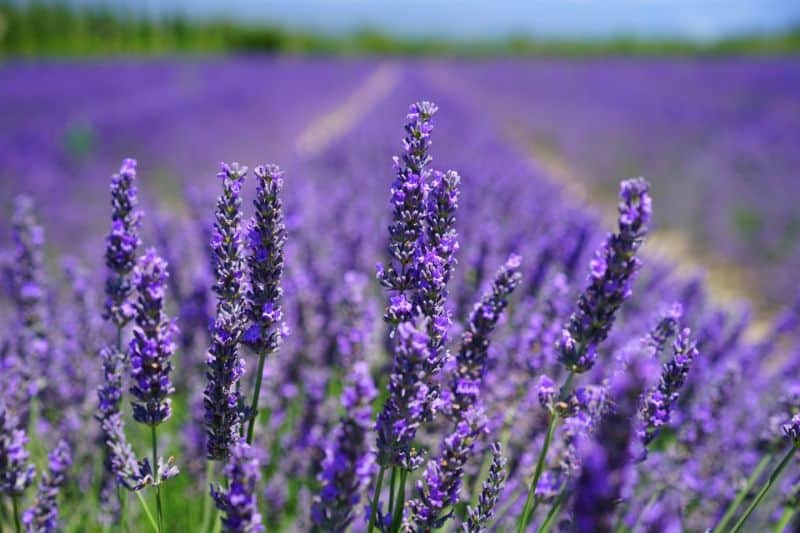
Lavender is synonymous with tranquility, thanks to its mesmerizing scent and lovely purple flowers. Not only is it aesthetically pleasing, but it also attracts pollinators, making it a fantastic addition to a full-sun garden. Lavender prefers well-drained soil and thrives under drought conditions once established. Its ability to flourish in poor soils is a significant plus for gardeners looking for low-maintenance perennials.
For the best results, plant lavender where it can bask in full sunlight for at least six hours a day. Regularly pruning your lavender plants after flowering will encourage a bushy growth habit and prolong the plant’s life. In addition, dried lavender can be harvested to create potpourri or infused oils, making it a versatile and rewarding plant to grow.
Hyacinths

Hyacinths are another perennially admired for their intoxicating fragrance and vibrant blooms that herald the arrival of spring. Although technically classified as bulbs, they grow perennially in Zone 5. These beauties thrive in full sun and prefer well-drained soil that retains moisture without becoming soggy.
Plant hyacinth bulbs in the fall for spring blooms and consider layering them among other perennials for a tiered effect as the seasons change. Once the fragrant blossoms fade, allow the leaves to die back naturally to feed the bulb. With a rich variety available, you can mix colors for a stunning display that transforms your garden into a sensory delight.
Salvia
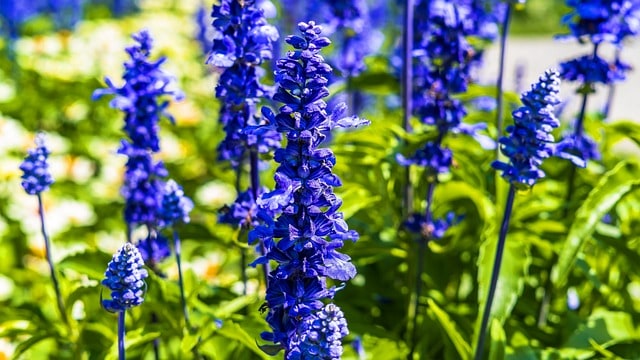
Salvia, often referred to as sage, is a diverse genus that includes many perennials thriving in full sun. Known for their spiky flower heads and vibrant hues, salvias can serve as a compact yet dynamic element in any Zone 5 perennial garden. Typically, salvias prefer well-drained soil and exhibit excellent drought resistance once established.
These sun-loving plants are magnetically appealing to hummingbirds and bees, enhancing your garden’s environment while adding stunning color from late spring through early fall. Their ability to tolerate poor soils makes them highly adaptable, and they thrive in both formal beds and more casual landscapes. Regular deadheading promotes prolonged blooming, and various cultivars are available, offering a palette ranging from deep blues to vivid reds.
Hollyhock
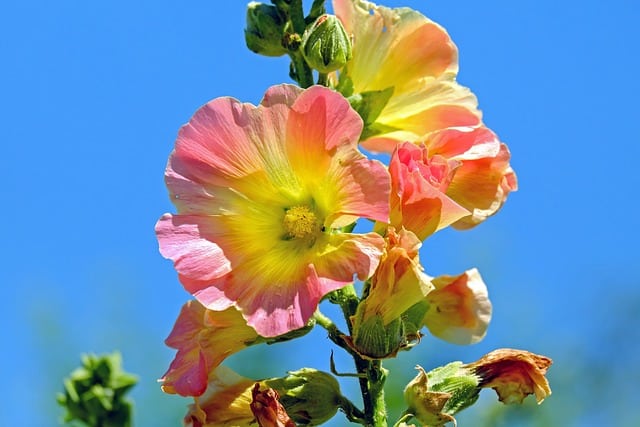
Hollyhocks (Alcea rosea) are classic garden perennials that exude a nostalgic, cottage garden feel and reach impressive heights, often standing 6 feet tall or more. These biennial plants thrive in full sun and prefer well-drained soil with good fertility. Not only do they boast a vibrant array of colors, but hollyhocks also have a unique flower structure that attracts a host of pollinators, providing ecological benefits to your garden.
Due to their height, hollyhocks are commonly used at the back of borders or as vertical accents in a landscape. To ensure stability and prevent breakage during storms, incorporate staking or plant them in sheltered locations. Being a magnet for bees and butterflies, these flowers will infuse your garden with life and movement.
Coneflower (Echinacea purpurea)
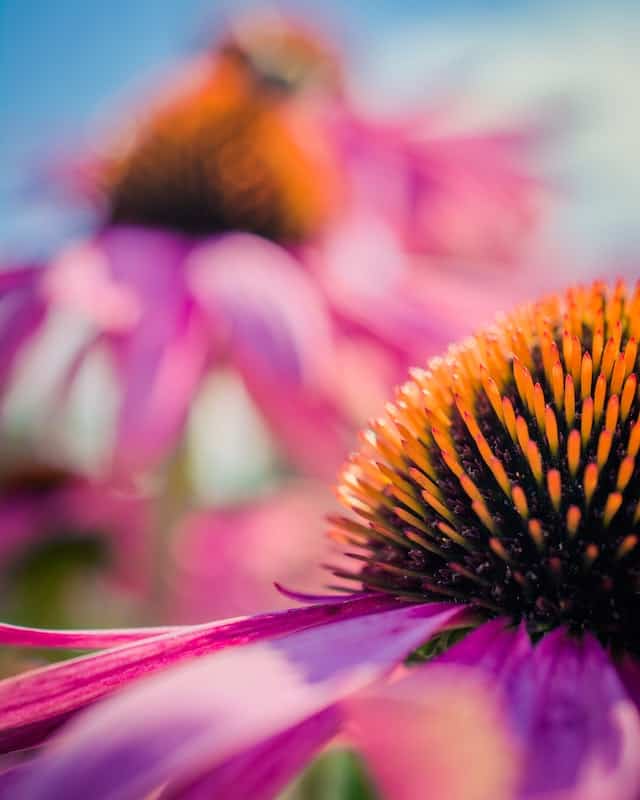
Enveloping the same beauty and wildlife attraction as typical purple coneflowers, the Echinacea purpurea deserves its dedicated section for its unique qualities. Often renowned for its medicinal properties, particularly in supplement form for immune support, Echinacea offers both visual and practical advantages.
As with other coneflower species, Echinacea purpurea thrives in full sun and has low water needs once established, making it ideal for Xeriscaping. Its charming petals shade from vibrant purples to subtle pastels, inviting butterflies and beneficial insects to your garden. Planting in groups increases their visual impact and encourages a naturalized appearance. This striking perennial absolutely enriches the biodiversity of your garden.
Blazing Star (Liatris spicata)
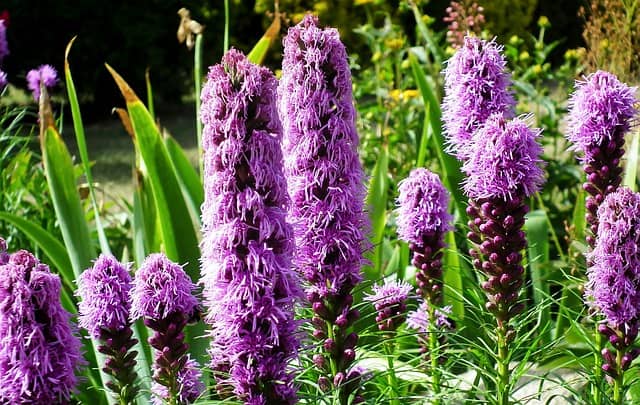
Blazing star, or Liatris spicata, offers an eye-catching vertical display of purple flowers on slender, upright stems. This perennial is also heat and drought tolerant, making it a superb choice for Zone 5 gardens, particularly in full sun. Liatris is renowned for its ability to attract pollinators, including butterflies and bees, supporting biodiversity and enhancing your garden’s overall environment.
Blazing star’s unique blooming pattern also provides interest as the flower heads begin opening from the top down, extending the visual appeal over time. Given that Liatris also tolerates a variety of soil types, plant it in clusters for a dramatic effect or intersperse it among other sun-loving perennials to create a rich tapestry of color and texture.
Daylily (Hemerocallis spp.)

Daylilies are long-time favorites among gardeners for their hardiness, adaptability, and vibrant blooms. These perennials bloom profusely in full sun, boasting a kaleidoscope of colors. One of the most appealing characteristics of daylilies is their sheer variety — with thousands of cultivars to choose from, you can find varieties blooming throughout the growing season.
They flourish in various soils but enjoy those rich in organic matter. Daylilies are relatively low maintenance; once established, they are drought-tolerant and can thrive on minimal care. Deadheading spent blooms can enhance the plant’s appearance and promote further flowering. Their resilience, coupled with their beauty, marks them as indispensable in a Zone 5 full-sun garden.
Yarrow
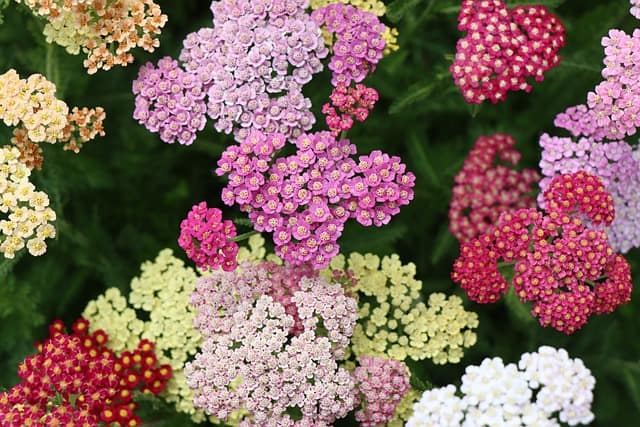
Yarrow (Achillea millefolium) is a perennial that deserves recognition for both its stunning flower clusters and its utility. With their flat-topped flower heads in hues ranging from white to yellow and even pink, they are a standout in sunny gardens. Yarrow is particularly appreciated for its drought-tolerant qualities and ability to thrive in poor soil conditions, making it a go-to choice for low-maintenance gardens.
Additionally, yarrow is well-known for attracting beneficial insects, thereby supporting the broader ecosystem in your garden. Once established, yarrow requires little watering and is great for filling in spaces between other perennials or in wildflower areas. Its medicinal properties, often noted in herbal practices, add a historical layer to its gardening value.
Black-Eyed Susan (Rudbeckia fulgida)
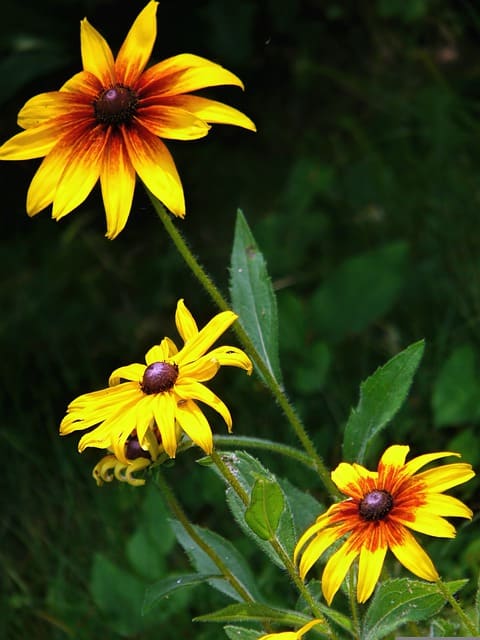
The cheerful Black-eyed Susan is a classic perennial that brings a burst of color to any full-sun garden. With its golden yellow petals surrounding a dark brown center, this perennial creates a warm and inviting atmosphere. Black-eyed Susans thrive in well-drained soil but are incredibly adaptable, handling various soil types and conditions.
Blooming from mid-summer to fall, these vibrant flowers provide a continuous show of color and attract a wide range of pollinators. Regular deadheading will prolong their blooming period. Plant them in naturalized drifts or as part of formal borders for delightful seasonal displays.
Blanket Flower (Gaillardia x grandiflora)
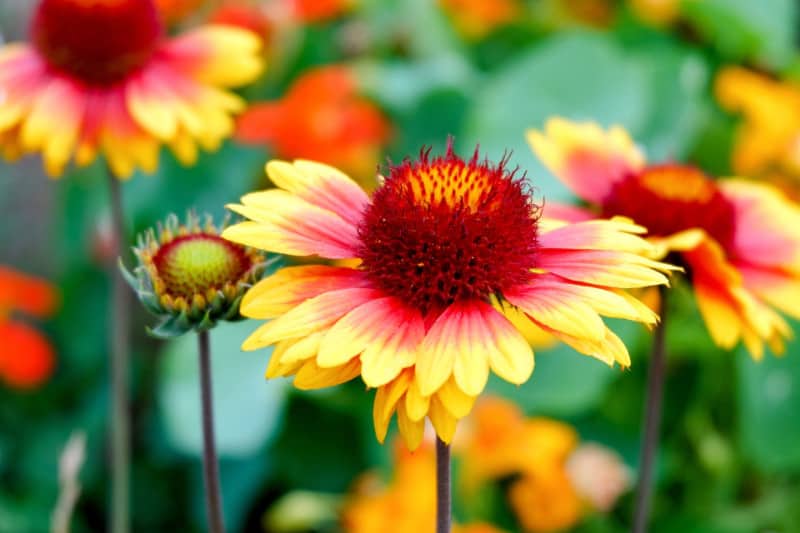
Known for its bold, fiery colors, Blanket Flower (Gaillardia x grandiflora) is a sun-loving perennial that fits comfortably in the Zone 5 landscape. With petals that resemble a fiery sunset, these flowers thrive in hot, sunny conditions and require well-drained soil to reach optimal growth.
Blanket Flowers are favored for their long blooming season and low maintenance needs, making them perfect for busy gardeners. Regular deadheading can extend their flowering into the fall. As an added bonus, these perennials attract bees and butterflies, adding life to your sunny garden spectacle.
Creeping Phlox (Phlox subulata)
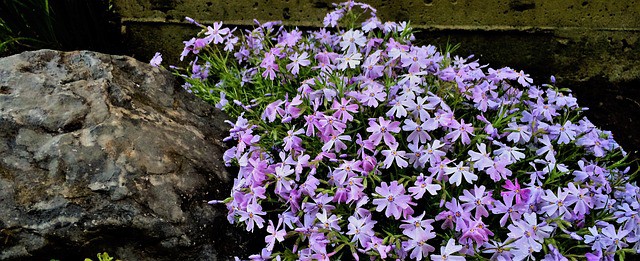
For ground cover that offers an explosion of spring color, look no further than Creeping Phlox. This beautiful carpet of flowers presents itself in vibrant pinks, blues, and whites. Preferring full sun, Creeping Phlox thrives in well-drained soil, making it a hardy option for sunny borders or pathways.
As a low-growing perennial, it is perfect for cascading over rocks or as filler between stones in a path. Keep the soil evenly moist during its early growth to achieve robust plants. Once established, these beauties will thrive with little maintenance, reliably returning each spring to brighten your landscape.
Catmint (Nepeta x faasseni)
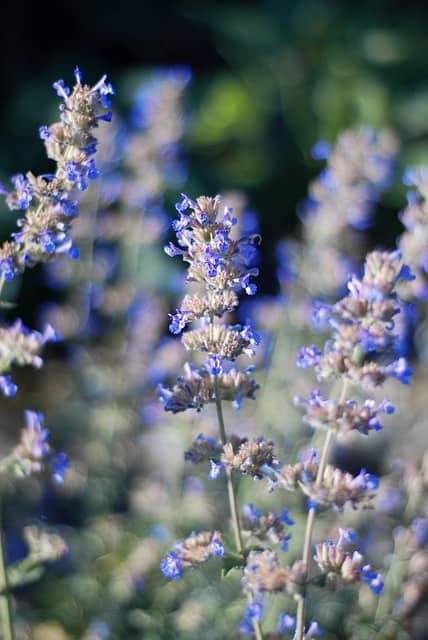
Catmint brings a soft beauty and fragrant foliage to sunny gardens. This perennial features delicate blue flowers that attract a variety of pollinators, including honeybees and butterflies. Catmint thrives in well-drained soil and prefers full sun, making it perfect for sunny beds and borders.
Its drought tolerance once established makes it a practical choice for gardens in dry regions. Regular cutting back after the first bloom can promote a second flush of flowers and keeps the plant lush. With minimal maintenance and a long blooming season, Catmint is an excellent option for any garden aiming for a relaxed, natural look.
Coral Bells (Heuchera spp.)
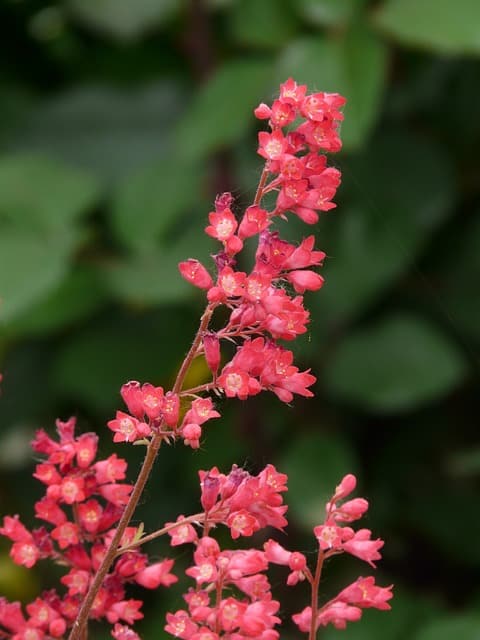
While Coral Bells (Heuchera spp.) can tolerate partial shade, many varieties thrive in full sun, especially in cooler climates. They are celebrated for their stunning foliage, which comes in an array of hues, including deep burgundy, lime green, and silvery tones.
These perennials add interest throughout the growing season, and they produce delicate flower spikes that attract pollinators in late spring and early summer. Preferring well-drained soil, Coral Bells are adaptable to a variety of garden styles, from formal arrangements to cottage gardens. Deadheading blooms encourages prolonged flowering and maintains a tidy appearance.
Blue Fescue (Festuca glauca)

Blue Fescue is a charming ornamental grass that offers a striking contrast to colorful perennials with its fine, grey-blue foliage. Thriving in full sun, this perennial grass prefers well-drained, dry soils and is exceptionally drought-resistant once established.
Blue Fescue works wonderfully in mixed borders or as a standalone feature in a minimalist garden. The compact size and fine texture lend an air of softness, suitable for contrasting with bold, flowering plants. They can also be used in rock gardens, proving their versatility across landscapes.
Butterfly Weed (Asclepias tuberosa)
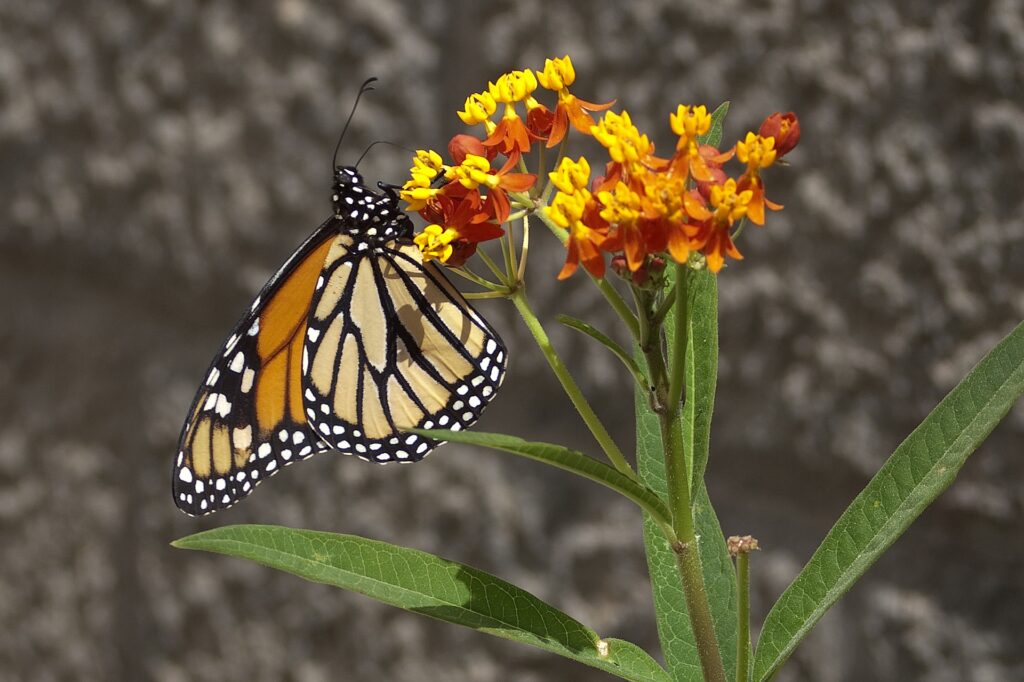
Butterfly Weed is both beautiful and beneficial, as it provides essential habitat for monarch butterflies and other pollinators. These bright orange flowers bloom in clusters and are best planted in full sun and well-drained soil.
Not only does Butterfly Weed add a splash of color to your garden, but it is also drought-tolerant, making it low maintenance. Allowing it to grow among other sun-loving perennials enhances its visibility and impact within mixed borders. Embrace this plant in your garden to nourish our planet’s pollinators.




